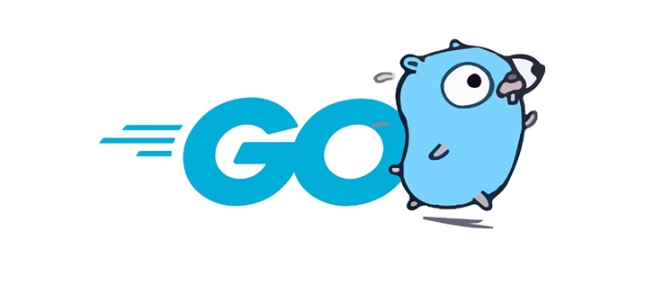In Go language, HTTP middleware is implemented through functions, and its core answer is: the middleware is a function that receives and returns http.Handler, which is used to execute general logic before and after request processing. 1. The middleware function signature is like func(Middleware(next http.Handler) http.Handler), which achieves functional extension by wrapping the original processor; 2. The log middleware in the example records the request method, path, client address and processing time-consuming, which is convenient for monitoring and debugging; 3. The authentication middleware checks the Authorization header, and returns 401 or 403 errors when verification fails to ensure secure access; 4. Multiple middleware can be used in combination through nested calls, and the execution order is from outside to inside and from inside to outside, so the order is crucial; 5. A more elegant middleware chain combination can be achieved by defining Middleware types and chainMiddleware functions; 6. Common application scenarios include logging, authentication authorization, timeout control, cross-domain support (CORS), current limiting and panic Recovery, etc.; 7. All functions can be implemented based on net/http native packages, without relying on third-party frameworks, and are highly maintainable and scalable. Go's middleware pattern is simple, flexible and highly combinable, suitable for building clear-structured Web services.

In Go, HTTP middleware is a very common and powerful pattern for executing some common logic before or after the request reaches the processing function, such as logging, authentication, timeout control, cross-domain support, etc.

The following is a clear example of how to write and use HTTP middleware.
? What is HTTP middleware?
The middleware is essentially a function that receives an http.Handler and returns a new http.Handler . It can preprocess the request, call the next processor, and execute post-processing logic afterwards.

Function signatures are usually as follows:
func Middleware(next http.Handler) http.Handler
? Example: Log Middleware
This middleware records the method, URL and processing time of each request.

package main
import (
"log"
"net/http"
"time"
)
// Log middleware func loggingMiddleware(next http.Handler) http.Handler {
return http.HandlerFunc(func(w http.ResponseWriter, r *http.Request) {
start := time.Now()
// Print request information log.Printf("Started %s %s from %s", r.Method, r.URL.Path, r.RemoteAddr)
// Call next.ServeHTTP(w, r)
// Printing time after the request processing is completed log.Printf("Completed %s in %v", r.URL.Path, time.Since(start))
})
}? Example: Authentication Middleware
This middleware checks whether there is a valid Authorization in the request header.
func authMiddleware(next http.Handler) http.Handler {
return http.HandlerFunc(func(w http.ResponseWriter, r *http.Request) {
token := r.Header.Get("Authorization")
if token == "" {
http.Error(w, "Authorization token required", http.StatusUnauthorized)
Return
}
// More complex verification logic (such as JWT) can be added here
if token != "Bearer mysecret" {
http.Error(w, "Invalid token", http.StatusForbidden)
Return
}
// Verification is passed, call the next processor next.ServeHTTP(w, r)
})
}?? Use middleware to combine multiple functions
Go's http.Handler combination method is very flexible. You can "wrap" multiple middleware on the outer layer of the final processor.
func helloHandler(w http.ResponseWriter, r *http.Request) {
w.Write([]byte("Hello, World!"))
}
func main() {
mux := http.NewServeMux()
mux.HandleFunc("/hello", helloHandler)
// Combination middleware: log first, then authenticate, and finally route handler:= loggingMiddleware(authMiddleware(mux))
log.Println("Server starting on :8080...")
http.ListenAndServe(":8080", handler)
}Request process:
Request → loggingMiddleware → authMiddleware → mux → helloHandler → 返回
? The order of middleware is very important!
The execution order of middleware is to enter from outside to inside and return from inside to outside :
// For example: final := A(B(C(handler)))
Execution order:
- Enter: A → B → C
- Processing: handler
- Return: C → B → A
So the order will affect behavior. For example, log middleware is usually placed at the outermost layer to make the complete recording time-consuming.
? More elegant writing: middleware toolkit
You can define a type to facilitate combining middleware:
type Middleware func(http.Handler) http.Handler
func chainMiddleware(mw ...Middleware) Middleware {
return func(final http.Handler) http.Handler {
result := final
for i := len(mw) - 1; i >= 0; i-- {
result = mw[i](result)
}
return result
}
}How to use:
middlewareChain := chainMiddleware(loggingMiddleware, authMiddleware)
http.ListenAndServe(":8080", middlewareChain(mux))? Summary of the key points
- Middleware is a function of type
func(http.Handler) http.Handler. - Use
http.HandlerFuncto wrap it easily. - Middleware can be combined, and the order affects the execution process.
- Common uses: logging, authentication, current limiting, CORS, Panic recovery, etc.
- It does not rely on third-party frameworks, and can be implemented in native
net/http.
Basically that's it. Go's middleware pattern is simple, clear and comboable, making it ideal for building maintainable web services.
The above is the detailed content of go by example http middleware. For more information, please follow other related articles on the PHP Chinese website!

Hot AI Tools

Undress AI Tool
Undress images for free

Undresser.AI Undress
AI-powered app for creating realistic nude photos

AI Clothes Remover
Online AI tool for removing clothes from photos.

Clothoff.io
AI clothes remover

Video Face Swap
Swap faces in any video effortlessly with our completely free AI face swap tool!

Hot Article

Hot Tools

Notepad++7.3.1
Easy-to-use and free code editor

SublimeText3 Chinese version
Chinese version, very easy to use

Zend Studio 13.0.1
Powerful PHP integrated development environment

Dreamweaver CS6
Visual web development tools

SublimeText3 Mac version
God-level code editing software (SublimeText3)

Hot Topics
 How does the switch statement work in Go?
Jul 30, 2025 am 05:11 AM
How does the switch statement work in Go?
Jul 30, 2025 am 05:11 AM
Go's switch statement will not be executed throughout the process by default and will automatically exit after matching the first condition. 1. Switch starts with a keyword and can carry one or no value; 2. Case matches from top to bottom in order, only the first match is run; 3. Multiple conditions can be listed by commas to match the same case; 4. There is no need to manually add break, but can be forced through; 5.default is used for unmatched cases, usually placed at the end.
 how to break from a nested loop in go
Jul 29, 2025 am 01:58 AM
how to break from a nested loop in go
Jul 29, 2025 am 01:58 AM
In Go, to break out of nested loops, you should use labeled break statements or return through functions; 1. Use labeled break: Place the tag before the outer loop, such as OuterLoop:for{...}, use breakOuterLoop in the inner loop to directly exit the outer loop; 2. Put the nested loop into the function, and return in advance when the conditions are met, thereby terminating all loops; 3. Avoid using flag variables or goto, the former is lengthy and easy to make mistakes, and the latter is not recommended; the correct way is that the tag must be before the loop rather than after it, which is the idiomatic way to break out of multi-layer loops in Go.
 Using the Context Package in Go for Cancellation and Timeouts
Jul 29, 2025 am 04:08 AM
Using the Context Package in Go for Cancellation and Timeouts
Jul 29, 2025 am 04:08 AM
Usecontexttopropagatecancellationanddeadlinesacrossgoroutines,enablingcooperativecancellationinHTTPservers,backgroundtasks,andchainedcalls.2.Withcontext.WithCancel(),createacancellablecontextandcallcancel()tosignaltermination,alwaysdeferringcancel()t
 Building Performant Go Clients for Third-Party APIs
Jul 30, 2025 am 01:09 AM
Building Performant Go Clients for Third-Party APIs
Jul 30, 2025 am 01:09 AM
Use a dedicated and reasonably configured HTTP client to set timeout and connection pools to improve performance and resource utilization; 2. Implement a retry mechanism with exponential backoff and jitter, only retry for 5xx, network errors and 429 status codes, and comply with Retry-After headers; 3. Use caches for static data such as user information (such as sync.Map or Redis), set reasonable TTL to avoid repeated requests; 4. Use semaphore or rate.Limiter to limit concurrency and request rates to prevent current limit or blocking; 5. Encapsulate the API as an interface to facilitate testing, mocking, and adding logs, tracking and other middleware; 6. Monitor request duration, error rate, status code and retry times through structured logs and indicators, combined with Op
 how to properly copy a slice in go
Jul 30, 2025 am 01:28 AM
how to properly copy a slice in go
Jul 30, 2025 am 01:28 AM
To correctly copy slices in Go, you must create a new underlying array instead of directly assigning values; 1. Use make and copy functions: dst:=make([]T,len(src));copy(dst,src); 2. Use append and nil slices: dst:=append([]T(nil),src...); both methods can realize element-level copying, avoid sharing the underlying array, and ensure that modifications do not affect each other. Direct assignment of dst=src will cause both to refer to the same array and are not real copying.
 Working with Time and Dates in Go
Jul 30, 2025 am 02:51 AM
Working with Time and Dates in Go
Jul 30, 2025 am 02:51 AM
Go uses time.Time structure to process dates and times, 1. Format and parse the reference time "2006-01-0215:04:05" corresponding to "MonJan215:04:05MST2006", 2. Use time.Date(year, month, day, hour, min, sec, nsec, loc) to create the date and specify the time zone such as time.UTC, 3. Time zone processing uses time.LoadLocation to load the position and use time.ParseInLocation to parse the time with time zone, 4. Time operation uses Add, AddDate and Sub methods to add and subtract and calculate the interval.
 How to use template.ParseFS with go embed?
Jul 30, 2025 am 12:35 AM
How to use template.ParseFS with go embed?
Jul 30, 2025 am 12:35 AM
Use the template.ParseFS and embed package to compile HTML templates into binary files. 1. Import the embed package and embed the template file into the embed.FS variable with //go:embedtemplates/.html; 2. Call template.Must(template.ParseFS(templateFS,"templates/.html")))) to parse all matching template files; 3. Render the specified in the HTTP processor through tmpl.ExecuteTemplate(w,"home.html", nil)
 How to import a local package in Go?
Jul 30, 2025 am 04:47 AM
How to import a local package in Go?
Jul 30, 2025 am 04:47 AM
To import local packages correctly, you need to use the Go module and follow the principle of matching directory structure with import paths. 1. Use gomodinit to initialize the module, such as gomodinitexample.com/myproject; 2. Place the local package in a subdirectory, such as mypkg/utils.go, and the package is declared as packagemypkg; 3. Import it in main.go through the full module path, such as import "example.com/myproject/mypkg"; 4. Avoid relative import, path mismatch or naming conflicts; 5. Use replace directive for packages outside the module. Just make sure the module is initialized






